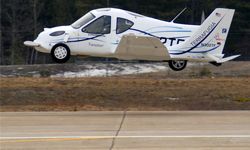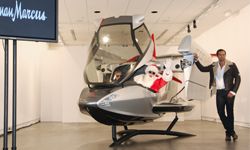Science fiction has served as a looking glass into the future for many advances we eventually came to feel we couldn't live without. Its conceived devices that labor on our behalf without requiring our attention, imagined the ability to see and hear one another instantaneously over great distances and predicted the reality that we'd be able to make journeys that once took weeks or even months in mere hours.
One technological perk where the present has yet to catch up with the future sci-fi has painted for us, however, is the elusive, personal flying car.
Advertisement
Spend just a little time as a daily car commuter in a major city, or a road warrior business traveler who spends too much time stuck in airports, and it's easy to understand the allure of a car that could levitate above the delays and frustrations of traveling with the jostling masses. Or a personal plane that lets you kiss those airport security hassles goodbye as you depart for your next vacation.
So what's the holdup? Why can't ordinary people fly themselves on short hops between cities, using the large network of hardly used small airports around the country? It's not such a far-fetched idea: In fact, there are more than 2,800 small airports around the United States, and they're vastly underused [source: Frank].
For a while, NASA even had a research program to figure out how to make it super-easy for ordinary folks to use this little-known network by flying on it themselves. But one of the key elements would be small, relatively affordable planes that were as easy to operate as cars [source: NASA].
It just so happens that more than a few companies are working on these dual-use vehicles. Whether you call them flying cars, or roadable aircraft, it's an idea that refuses to stay grounded.
Flying cars and their intrepid inventors have actually been with us for decades, but for many reasons, they've always seemed to sputter and stall before reaching commercial success.
But design advances, lightweight materials, electronic flying aids and new government rules could make this the decade that flying cars finally take off in the marketplace. This article will look at five contemporary prototypes of flying cars (in no particular order) and offer some estimate of when they might be buzzing treetops near you.
What if your ride to the airport was also your ride at the airport? Read the next page for our first prototype that offers door-to-runway service.


